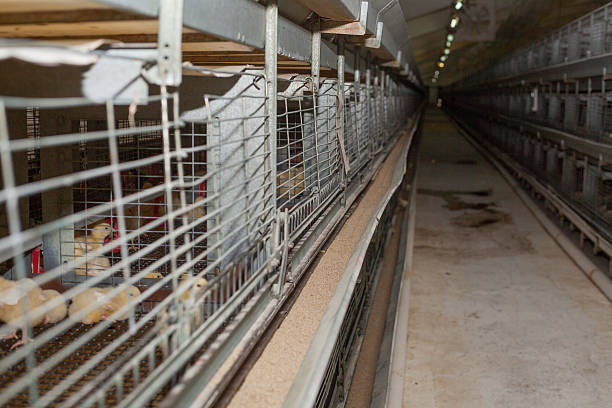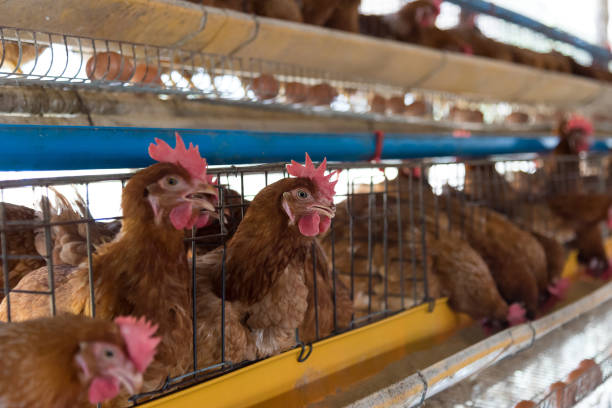Small Space, Big Impact: Chicken Cage Solutions for Urban Poultry Farms
Small Space, Big Impact: Chicken Cage Solutions for Urban Poultry Farms
Urban poultry farming, once a niche practice, has blossomed into a mainstream movement. More and more city dwellers are seeing the benefits of keeping chickens, from fresh eggs to sustainable living. However, space in urban environments is often a limiting factor. That’s where innovative chicken cage solutions come in, playing a critical role in maximizing productivity and ensuring the well-being of your flock, even in the tightest of spaces.
Why Urban Chicken Farming Is Taking Flight
Before we dive into cage specifics, let’s quickly touch on why urban chicken farming is gaining popularity:
Fresh, Nutritious Eggs: Nothing beats the taste and nutritional value of eggs laid by your own hens. You know exactly what your chickens are eating, ensuring higher quality eggs than those typically found in supermarkets.
Sustainable Living: Raising chickens reduces your reliance on industrial food production, promoting a more sustainable lifestyle. Chicken manure also makes excellent fertilizer for your garden.
Pest Control: Chickens are natural insectivores, helping to control pests in your yard and garden.
Educational Opportunity: Keeping chickens can be a great educational experience for children, teaching them about responsibility, animal care, and where food comes from.
Companionship: Chickens can be surprisingly entertaining and make great backyard pets.
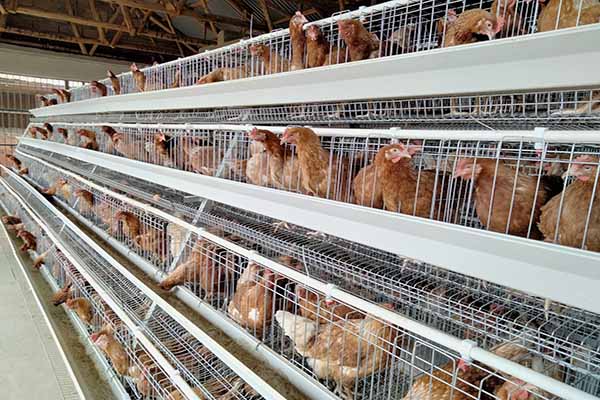
The Space Challenge: Where Chicken Cages Come In
Despite the many benefits, urban chicken farming often faces a significant hurdle: limited space. Traditional free-range setups may not be feasible in smaller yards or urban environments. This is precisely where well-designed chicken cages prove invaluable. They enable you to:
Maximize Space: Cages allow you to keep more chickens in a smaller area compared to free-range systems.
Control the Environment: Cages provide protection from predators, harsh weather, and other environmental hazards.
Manage Waste: Properly designed cages facilitate easier waste management, keeping your yard clean and reducing odors.
Monitor and Care for Chickens: Cages make it easier to observe your chickens, monitor their health, and provide individual attention when needed.
Types of Chicken Cages for Urban Farms
Not all chicken cages are created equal. Choosing the right type of cage depends on your specific needs, space constraints, and the number of chickens you plan to keep. Here’s a breakdown of some popular options:
Layer Cages (Egg-Laying Chicken Cages):
Design: These are specifically designed for egg-laying hens. They typically feature individual compartments for each hen, with sloping floors that allow eggs to roll gently to a collection area.
Benefits: Layer cages maximize egg production, minimize egg breakage, and make egg collection easy and efficient. They also allow for better monitoring of individual hen health. The multi-tier design can further increase the stocking density within a limited space, making full use of the vertical space.
Considerations: Layer cages might require a higher initial investment. The hens will still need time outside the coop.
Ideal for: Urban farmers focused on maximizing egg production in a limited space.
Broiler Cages (Meat Chicken Cages):
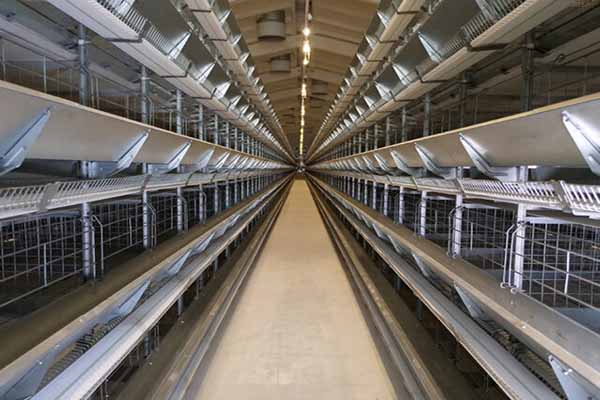
Design: These cages are designed for raising meat chickens (broilers) quickly and efficiently. They are usually larger than layer cages to accommodate the rapid growth of broilers.
Benefits: Broiler cages provide a controlled environment that promotes rapid weight gain and minimizes the risk of disease.
Considerations: Broiler cages are designed for short-term use, as broilers are typically slaughtered at a young age. You may need to manage them frequently, and pay attention to the growth of meat chickens.
Ideal for: Urban farmers interested in raising their own meat chickens.
A-Frame Cages:
Design: A-frame cages are self-supporting structures shaped like the letter “A.” They typically have a wire mesh floor and a covered roof for protection.
Benefits: A-frame cages are relatively easy to build and can be moved around the yard as needed.
Considerations: A-frame cages may not offer as much protection from predators as other cage types. The space utilization is lower.
Ideal for: Small-scale urban farmers who want a portable and affordable cage option.
Chicken Tractors (Mobile Cages):
Design: Chicken tractors are movable cages, typically with wheels or skids. They allow you to easily move your chickens to fresh pasture.
Benefits: Chicken tractors provide access to fresh grass and insects, improving the chickens’ diet and reducing the need for supplemental feed. They also help fertilize the soil.
Considerations: Chicken tractors may require more labor to move regularly.
Ideal for: Urban farmers with a small yard who want to provide their chickens with access to fresh pasture.
Custom-Built Cages:
Design: Custom-built cages can be tailored to your specific needs and space constraints. You can design them to fit odd-shaped areas or incorporate unique features.
Benefits: Custom-built cages offer the greatest flexibility and can be optimized for your specific urban farming setup.
Considerations: Custom-built cages may require more time and effort to design and build.
Ideal for: Urban farmers with unique space constraints or specific requirements.
Key Considerations When Choosing a Chicken Cage
Before you invest in a chicken cage, consider the following factors:
Size: The size of the cage should be appropriate for the number of chickens you plan to keep. A general rule of thumb is to provide at least 2-4 square feet of space per chicken inside the cage, and more is always better when possible.
Material: Choose a cage made from durable, weather-resistant materials such as galvanized steel or heavy-duty wire mesh.
Ventilation: Proper ventilation is essential for maintaining a healthy environment inside the cage. Ensure the cage has adequate ventilation openings to allow for airflow.
Predator Protection: The cage should be designed to protect your chickens from predators such as foxes, raccoons, and hawks. Use strong wire mesh and secure latches.
Ease of Cleaning: Choose a cage that is easy to clean and maintain. Features such as removable trays and sloping floors can simplify the cleaning process.
Accessibility: The cage should be designed for easy access to your chickens for feeding, watering, and egg collection.
Local Regulations: Check your local ordinances and regulations regarding chicken keeping to ensure your cage meets all requirements.
Optimizing Space with Chicken Cages: Practical Tips
Once you’ve chosen the right chicken cage, here are some tips for maximizing space in your urban farm:
Vertical Integration: Consider multi-tiered cages, especially layer cages, to maximize the use of vertical space. This allows you to keep more chickens in a smaller footprint.
Strategic Placement: Position the cage in a location that maximizes sunlight exposure and minimizes drafts. Avoid placing the cage in low-lying areas that are prone to flooding.
Utilize Wall Space: If you have a small yard, consider attaching the cage to a wall or fence to save space.
Combine Cage Types: You can combine different types of cages to optimize space and cater to different needs. For example, you might use layer cages for egg production and a chicken tractor for providing access to fresh pasture.
Regular Cleaning: Regular cleaning is essential for maintaining a healthy environment and preventing odors. Clean the cage at least once a week, removing droppings and soiled bedding. Make sure the cage has some method for you to easily clean the dropping from the chickens.
Proper Waste Management: Dispose of chicken waste properly to prevent odors and attract pests. Compost the waste or use it as fertilizer for your garden.
Enrichment Activities: Provide your chickens with enrichment activities to keep them entertained and prevent boredom. This can include perches, dust baths, and toys.
Maximize Outside Time: Even if you are using cages, try to provide your chickens with access to an outdoor run for at least a few hours each day. This will allow them to forage, dust bathe, and exhibit natural behaviors.
Consider Automatic Systems: Automatic feeding and watering systems can save you time and effort, and ensure that your chickens always have access to food and water. Automatic egg collection systems can also simplify egg collection.
Beyond the Cage: Creating a Thriving Urban Chicken Farm
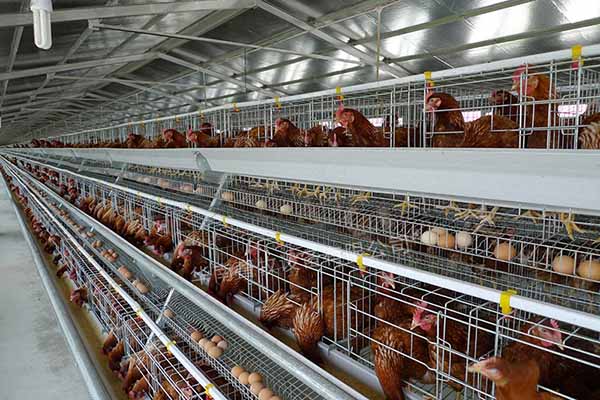
While chicken cages are essential for managing space, they are just one piece of the puzzle. To create a thriving urban chicken farm, you also need to consider:
Breed Selection: Choose chicken breeds that are well-suited to urban environments. Some breeds are more docile and quieter than others, making them better neighbors.
Nutrition: Provide your chickens with a balanced diet that meets their nutritional needs. Supplement their feed with fresh greens, fruits, and vegetables.
Health Care: Regularly monitor your chickens for signs of illness and provide them with appropriate veterinary care.
Predator Control: Implement measures to protect your chickens from predators. This can include installing fencing, using motion-activated lights, and securing the coop at night.
Community Engagement: Educate your neighbors about the benefits of urban chicken farming and address any concerns they may have.
The Future of Urban Poultry Farming
As urban populations continue to grow, the demand for locally sourced food will only increase. Chicken cages will play an increasingly important role in enabling urban dwellers to raise their own chickens and enjoy the benefits of fresh eggs, sustainable living, and a closer connection to their food. With careful planning, innovative cage designs, and a commitment to responsible animal care, urban poultry farming can thrive in even the smallest of spaces. Embrace the challenge, explore the possibilities, and join the growing movement of urban chicken farmers who are making a big impact in small spaces. The impact of urban farming can be very big in a long time.
By carefully considering your needs, space constraints, and local regulations, you can choose the right chicken cage and create a thriving urban poultry farm that benefits you, your community, and the environment.




